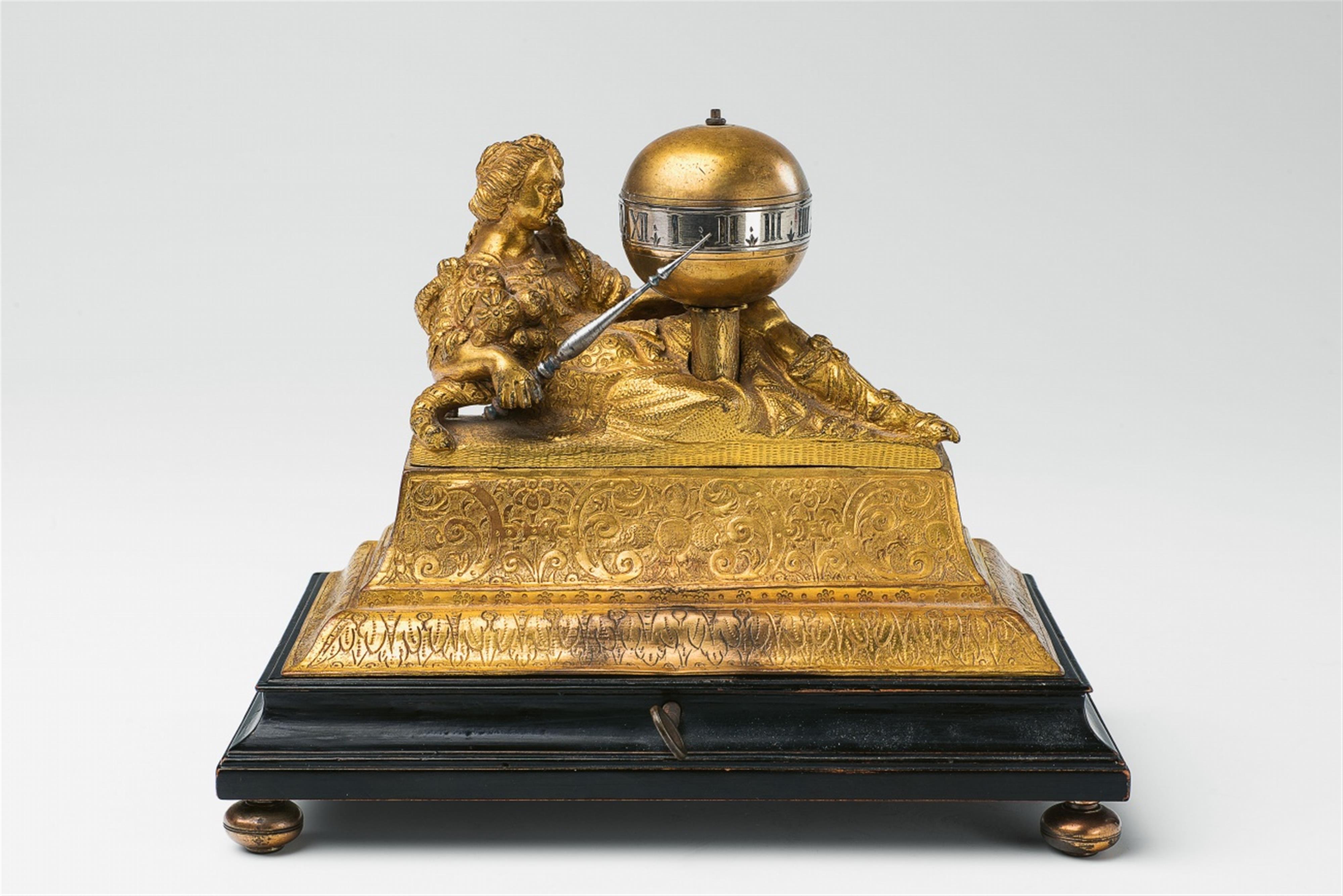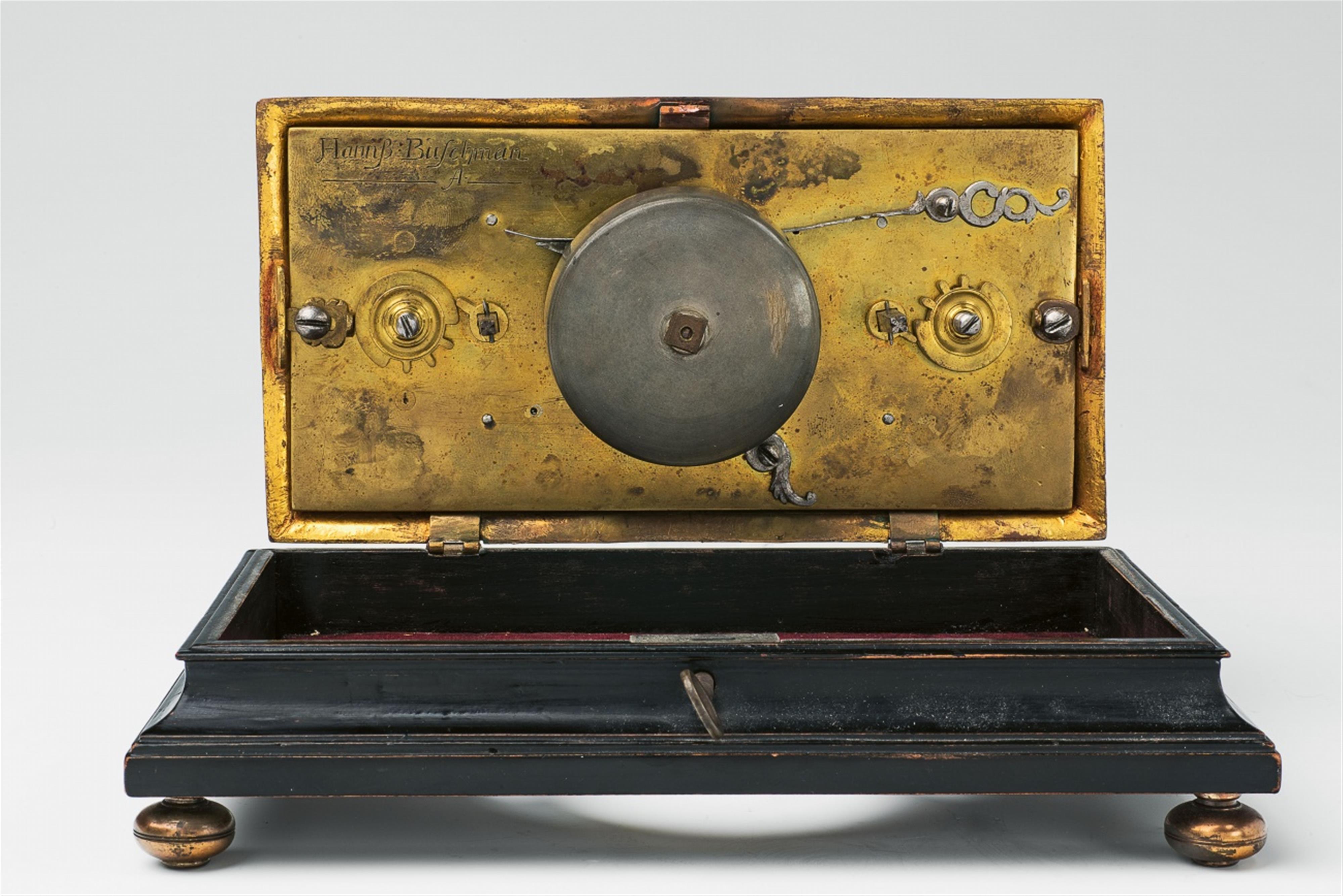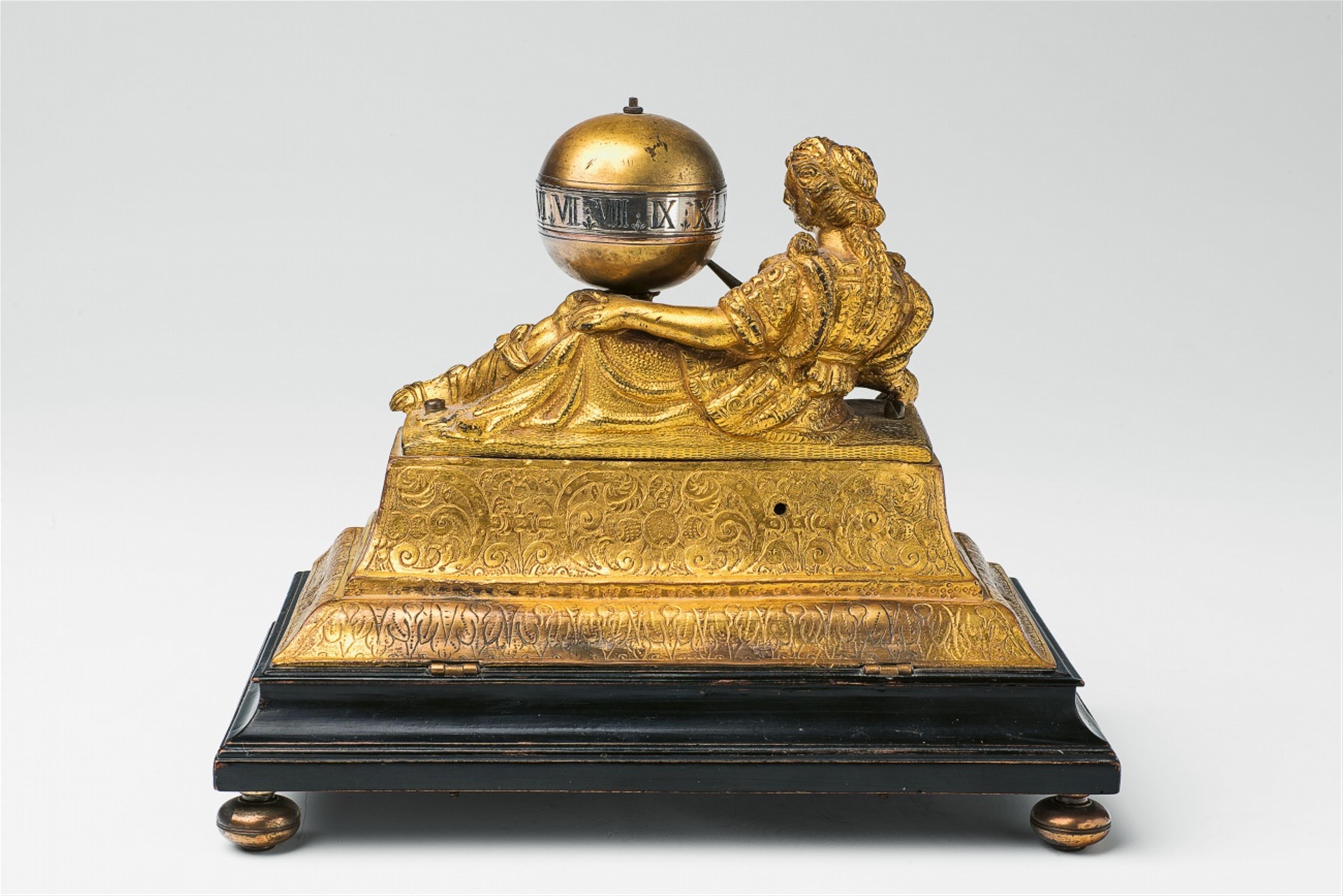An Augsburg figural clock "Urania"
Gilt copper and bronze, engraved dial and silver hands, ebonised wood base and later red velvet to the interior. One day movement with hourly striking to a bell. Designed as a figure of Urania, the muse of astrology, recumbent upon a moulded gilt copper plinth upon a contrasting ebonised wood base. The sceptre in her right hand forms the hour hand of the clock, pointing towards the hour indices on the equatorial band of the globe on a column. Engraved to the upper right of the plate "Hannß Buschmann A". H 16.3, W 20, D 11.6 cm.
Hanns Buschmann, 2nd quarter 17th C.
Hanns Buschmann (circa 1600 - 1662) was born into a family who are known to have produced small-scale clocks in Augsburg since 1536. Maurice lists his earliest known work as the architectural clock in the Kunsthistorisches Museum Vienna with an ivory memento mori figure carved by Christoph Angermair, dated 1624. This magnificent work alone demonstrates the extent of the young man's talent. Another of his most spectacular works can also be dated to this period. This clock forms the surmount of Ulrich Baumgartner's stone inlaid cabinet, completed by him in 1626 and now housed in the Palazzo Pitti. When Buschmann's sons entered the workshop in the mid-17th century, the gilt brass or copper clock cases were gradually superseded by ones made from silver or inlaid wood. The next generation were less likely to carry out their own designs in the traditional artist-craftsman manner, and instead mainly worked after plans provided by sub-contractors.
Provenance
Private collection, Lower Saxony.
Literature
An almost identical Urania clock illus. in: Maurice, Die deutsche Räderuhr, vol. II, Munich 1976, illus. 376, without the ebonised wood base.
According to Maurice, Hans Buschmann not only made clocks with particularly opulent cases, but also movements with cross striking movements to enable more precise running and more accurate time keeping (ibid. vol. 1, p. 153). For other clocks by Buschmann cf. ibid. vol. II, illus. 315, 460, 465, 595, 666, 687, 695, etc.






